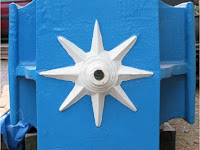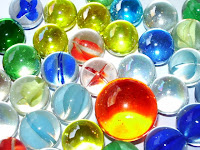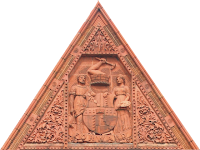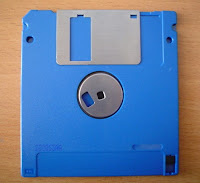Yipee! It's almost summer vacation. But even when school is out, learning still will be very much in. Summer vacation, educators say, is no time for parents to let their kids forget about academics.
Research has shown that if you don't keep your child's brain working during this interlude, she could lose, on average, 2.6 months of grade-level equivalency in math skills and as much as a year's reading level. Read more...
5/23/2009
Kids who learn math skills early have lasting advantage
| Two Wilfrid Laurier University professors have found that when parents play with their young children, they hardly spend any time teaching them about amounts and numbers. Yet if parents knew how to talk about math concepts, they’d give their children an advantage that would last all through their school years. Read more... |
Kids Math: Understand Shapes (Part 3)
Kids Math: Understand Shapes (Part 2)
Ok, this is part 2 for understanding shapes - polygon, which is a plane figure bounded by straight edges. For example, a polygon with five sides and five angles called pentagon.
Let's begin to learn polygon shapes!
Pentagon: A polygon with five sides and five angles


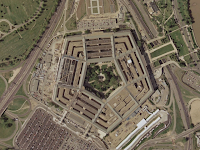

Hexagon: A polygon with six sides and six angles




Heptagon: A polygon with seven sides and seven angles




Octagon: A polygon with eight sides and eight angles


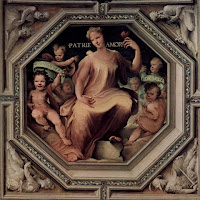

Let's begin to learn polygon shapes!
Pentagon: A polygon with five sides and five angles




Hexagon: A polygon with six sides and six angles




Heptagon: A polygon with seven sides and seven angles




Octagon: A polygon with eight sides and eight angles




Kids Math: Understand Shapes (Part 1)
5/21/2009
NCTM Curriculum Focal Points for PreK~8 Mathematics
NCTM, The National Council of Teachers of Mathematics is a public voice of mathematics education, providing vision, leadership and professional development to support teachers in ensuring equitable mathematics learning of the highest quality for all students.
NCTM Curriculum Focal Points are the most important mathematical topics for each grade level. They comprise related ideas, concepts, skills, and procedures that form the foundation for understanding and lasting learning.
Curriculum Focal Points for Prekindergarten through Grade 8 Mathematics is available for PDF download as a full document here.
For more information, please visit the Curriculum Focal Points
NCTM Curriculum Focal Points are the most important mathematical topics for each grade level. They comprise related ideas, concepts, skills, and procedures that form the foundation for understanding and lasting learning.
Curriculum Focal Points for Prekindergarten through Grade 8 Mathematics is available for PDF download as a full document here.
For more information, please visit the Curriculum Focal Points
5/20/2009
Mathematics Benchmarks for Grades K-12

Achieve, created in 1996 by the nation’s governors and corporate leaders, is an independent, bipartisan, non-profit education reform organization based in Washington, D.C. that helps states raise academic standards and graduation requirements, improve assessments and strengthen accountability.
Now, Achieve has mapped out what students need to know and be able to do in mathematics in grades K – 12, seamlessly connecting the expectations throughout the grades with those for the end of high school.
Following are the benchmarks for grades K-12:
Elementary Mathematics Benchmarks, Grades K – 6
Secondary Mathematics Benchmarks, Grades 7 – 12
ADP benchmarks in Mathematics for the end of high school
For more information, please visit Archieve, Mathematics Benchmarks, Grades K – 12
Why learn math?

If a kid ask you, "Why learn math?", how do you answer this question?
It is because math is fun? Math is useful? Math is the mother of science? Or the teacher asks you to learn, so you have to?
SHERMAN K. STEIN, Professor of Mathematics at the University of California, Davis, in his book Strength in Numbers: Discovering the Joy and Power of Mathematics in Everyday Life says, math is much more than "a collection of procedures to calculate numbers." It is an essential tool with which to understand the world around us.
When the child come to this world and begin to develop the relationship with the world, Mathematics, is the big elephant that they can ride on and discover the unknown field. It's also a good tool they can observe, explore and understand this world.
So, you can ask your kid instead, "what do you want to be when you grow up?"
Architects? They must know how to calculate loads and find applicable materials.
Biologists? They analyze collected data during research and record statistical information.
Programmers? They must have strong logic skills to write the code and solve the problems.
Engineers? They use algebra and geometry to build products like automobiles, computers and machines.
Lawyers ? They have to prove theorems and properties using deductive logic and make decision by complicated case study.
Physician? They need analyze the data to diagnosing disease, calculate appropriate amounts of medicine.
Politicians? They need to know economic numbers, the impact of interest rates, and how budget deficits affect trade.
5/19/2009
New Study: Chewing gums raises kids' math scores?

Recently, a study has shown that chewing gum in class helps reduce stress, improve alertness and relieve anxiety for students, and thus improves math scores.
Researchers at the Children's Nutrition Research Center at Baylor College of Medicine in Houston tested 108 students, between the ages of 13 to 16, 52 girls and 56 boys, who were assigned to two groups, either chew sugar-free gum during math class, while doing math homework and during math tests or to refrain from gum-chewing.
After 14 weeks, the students' took a math test and their grades were assessed and those who had chewed gum showed a 3% increase in their scores, while their final grades were also "significantly better" than non-chewers.
The study was sponsored by the Wrigley Science Institute , which is part of the Wrigley Gum company.
The results of the study, by Craig Johnston, PhD, said:
"Some researchers speculate that a decreased level of stress leads to better focus and concentration, which may explain the relationship between gum chewing and increased focus and concentration." He adds that the study "demonstrates the potential benefits of chewing gum on academic performance in a real-life, classroom setting with teenagers."
The study was presented at the Annual Meeting of Experimental Biology 2009, in New Orleans.
Reference:
Chewing gum raises kids' math scores, Los Angeles Times
Chewing gum may raise math grades in teens, Reuters
Math + Chewing Gum = Better Grades?, WebMD.com
Miao Girl, by mooney47
5/17/2009
Compare Different Objects
In this class http://math.kid-smart.net/prek/diff, kids can compare the groups of objects and identify which one is different by measuring the attributes of the object such as shape, color and so on.


5/16/2009
Compare The Same Object
In this lesson http://math.kid-smart.net/prek/same, kids can compare the groups of object and identify the same object as above. By measuring attributes such as shape, color, kids learn to solve problems by making direct comparisons of objects on the basis of these attributes.


5/15/2009
Number Sequence
In this lesson: http://math.kid-smart.net/prek/sequence, pre-k kids can learn about number sequence from 1~20. The cute train displays continous connection from one number to next and kids need to fill out the empty ones.


5/12/2009
Connect by same count
In this lesson: Connect by Same Count at http://math.kid-smart.net/, pre-k kids can learn about counting, classification and numbers by matching sets and comparing number amounts. Please try this and have fun!!!


5/07/2009
More or Fewer
In this lesson: More or Fewer at http://math.kid-smart.net/, kids can compare objects by counting and identify which are more than or less than others.
5/04/2009
Counting by Groups
By the lesson Counting by Group at http://math.kid-smart.net , kids can classify the object and count the object.


Subscribe to:
Posts (Atom)




